As I have mentioned elsewhere on this website, I love the RV lifestyle! So much so that I live in mine all the time! It is a great way to see the country, to work where and when I want, and to visit and stay in places that I choose.
Since hitting the road in 2008, I have learned many things along the way: some by the advice of others and some by my own doings.
When you travel in a big vehicle, the chance for things to go wrong is greatly increased unless you are prepared. Ask any RVer! They will tell you about some unfortunate event they have had on the road. But in this article, I want to talk about RV tire pressure monitoring systems, and in particular, the Pressure Pro system.
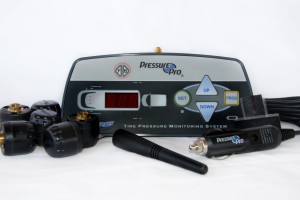
Pressure Pro RV Tire Pressure Monitor System
Overall Product Rank: 8.0 out of 10
Product Description: Pressure Pro offers several models for six, 16, and 34 wheels. The 16-wheel system is designed with RVers in mind and features a forward/back button to monitor the tow vehicle and trailer or each individually.
They’re designed for easy installation; plug the dash monitor in and screw sensors on the tire valves. Units can read real-time pressures from 10 to 199 psi and display psi, BAR, or kPa. Monitors have two low-pressure alerts, at 12.5- and 25-percent drops. They also have a user-adjustable high-pressure alert that’s factory set at 24-psi overinflation.
Audible and visual alerts identify the tire’s location and show real-time pressure. Press a button to check each tire’s air pressure; displays in psi, BAR, or kPa and displays the temperature. The operating range is up to 199 feet. Kits include a monitor and a 3.5-inch antenna; an extra antenna may be needed in certain applications. Tire sensors are sold separately; batteries last 4-5 years, and there’s an exchange program.
Pros and Cons: The only negative I can come up with is that you have to send the units back to have the battery replaced. However, I have had my sensor for over five years, and they are still going. We did unscrew them to keep them from taking readings when not in use. They were only installed during travel days.
Price: Base kits with six sensors start at $499.99, less at other sources.
Guarantee: One-year warranty
Product Specifications: 10 WHEEL MONITOR Part #ALTGPM10)
- Monitors 1 to 10-wheel positions
- Dimensions, Weight, Power = 6.5”W x 3.0”H x 0.5”D, 4 ounces, 12VDC
- For use on Auto, SUV, RV, Heavy Equipment, Ag, Bus, Truck
- Communicates (real-time) via RS232 to a serial port
- Data Logging capabilities
TPMS Comparisons:
The reason that a tire pressure monitor system is so important is that in an RV, your life, your belongings, your loved ones, and all the other stuff you have are riding on 6 to 8 tires, depending on your RV setup.
Now because they are so heavy, that just makes the job of an RV tire that much more demanding. My 5th wheel trailer came in at 21,000 pounds, riding on 8 tires. If one of those tires blows in travel, it can tear apart the underside of the RV, creating thousands of dollars in damage!
It has not happened to me, but I have seen numerous occasions as I travel, especially in the summer, when road temperatures take the tires to dangerously high temperatures, and they blow out unless you are monitoring their performance.
Now, this usually happens because the tires are either under or over-inflated, and sometimes because they are old and should have been replaced. RV tires are a rare sort of thing in that they can have really good tread left on the tire, but the tires themselves are dried out and may possibly have cracked sidewalls.
Automobiles, on the other hand, are driven every day and get 20 – 50 thousand miles on them a year. In an RV’s lifetime, it may not see that much mileage as they mostly stay parked. Most people only get to enjoy them on family vacations!
Tires rely on movement to push the emollients of the tire outward, thereby protecting the tire walls from ozone and UV damage. When tires don’t move often enough, the tires don’t have a chance to flex and perform this function.
The best rule with RVs is to replace the tires every five years. When the RV is not in use, use a rubber rejuvenator on the tires, keep them off wet surfaces, and keep them covered.
Avoid armor all and that kind of product. It will dry your tires out. Consult your tire manufacturer for suggestions. I had Michelin tires on my truck, and they had their own tire product that I used on all my RV tires. It is very similar to the 303 Aerospace Protectant, which I now use.
Now, back to the discussion of the tire pressure monitor system’s use. With the Pressure Pro system, you can monitor as few as six tires on your RV or as many as sixteen. The tire sensors screw onto the valve stems, and the monitor attaches inside your vehicle to monitor each tire individually.
If pressure changes 12.5% from the starting install value, it gives a gentle alarm. If the pressure changes 25% over the install value, it loudly notifies you. Either way, it notifies you that it’s time to get off the road and check the appropriate tire.
I have even been parked for the evening and had the alarm go off overnight because a valve stem developed a leak. I usually don’t check my tire pressure every day while in travel mode, but the Pressure Pro does it for me.
In this case, I would have had some serious problems had I not fixed the leak prior to hitting the road. And I only knew about it because the system’s alarm was going off.
I have also been traveling in extreme temperatures and have had the tire pressure monitor system alarm sound because the pressure was getting a little too high. So we pulled over at a rest area, let the tires cool, and continued our safe travels. Had we not known, we could have had a blowout! Have you seen what a blown tire does to an RV?
Should these sensors show inside tire temperature readings too? Keep reading, I’ll introduce the best tire pressure monitoring system currently on the market for RVers!
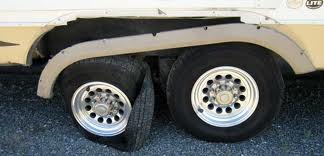
Blown Tire Damage on a 5th Wheel!
Or even worse:

Blown Steering Tire Damage!
I also talked about another tire issue we had on our fifth-wheel trailer elsewhere on this website. Had we not had the Pressure Pro tire monitor system in use at that time, we would have had serious RV damage the next day!
The Pressure Pro tire pressure monitor systems, no matter which one you choose, and depending on your RV setup, will help you to relax while traveling. You will know your tires are safe, and at some point help, you avoid serious damage to your RV, yourself, or your loved ones!
Fall 2017 Update
Here is another system on the market that I have just learned about and now own. I wanted to pass it along as another option for you! It is the TST Tire Monitoring System.
The thing I like most about this is you can replace the batteries yourself. With the PressurePro sensors, you have to send them in for replacement at a significant cost. Also, the tire temperature readings from inside the tires are displayed. This is important information you need to know when traveling in a loaded vehicle, especially an RV or truck!
If you have not checked out my recent video, please do so!
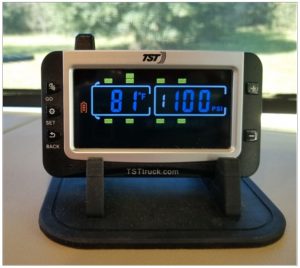
- The system reports temperature and pressure readings.
- The color monitor – 3.5″ x 1-3/4″ screen.
- Can monitor up to four different trailers and one hundred and ten sensors.
- A PSI range of up to two hundred and eighteen PSI’
- Easy to read warnings for high and low pressure and temperature.
- Can customize each axle for high and low alert parameters.
- Replaceable sensor batteries.
- Theft-resistant sensors.
- Auto-scrolling of tire readings as you drive.
The TST 507 with six cap sensors is ideal for an RV with a single rear axle with duals. This system includes the signal repeater and the new color monitor. This will cover your back duals and your two front tires and give you peace of mind as you drive down the road. This would also work great for a triple axle 5th wheel, and then you could add some flow-through sensors for your tow vehicle. Lots of options with the TST 507 Color Monitor system!
Here are some pictures of unpacking the unit and putting it to use:
We got six regular sensors and two pass-through sensors to try.
Then, per the instructions, we labeled the sensors so we would know which ones to program for each tire location.
Then we got a look at the monitor screen with its protective cover that we removed.
The best part of the whole system is the instructions that were emailed once the system was purchased. The instructions that came with the TST 507 are okay, but the instructions emailed to me were so much clearer, and had my new tire pressure monitor system set up very quickly and easily!
Once we had the tire pressure monitor units installed and the monitor programmed, I turned it on and waited a few minutes while it picked up the signal from each tire pressure monitor.
I had set the tire pressure for each tire prior to installing them. I also verified what that pressure should be based on the load charts for my tires.
Here is a picture of our latest journey, the second one since we started using the TST 507 system. We left early, before dawn, and had to stop at the post office, I took this picture while Pam was mailing some documents we needed to get in the email.
Notice the temperature of the tire shown: thirty-four degrees internal temperature. It was a cold morning! I had the tires set at eighty psi just before travel and noticed the eighty-six psi reading after only four miles of travel.
Traveling with our new TST 507 tire pressure monitor system has made the journey so much more enjoyable because we don’t have to worry about what is going on with our tires. Without properly functioning tires, we could not safely do what we need to do!
2023 Update
I heard about the new TST 770 series system and upgraded to it due to the larger monitor and also that it has a touchscreen.
- FULL-COLOR TOUCH SCREEN: 5-inch full-color touch screen display for real-time tire temperature and pressure readings.
- SAFETY AND EFFICIENCY: Increased awareness brings increased safety, tire life, and fuel economy.
- BACKWARDS COMPATIBLE: Backwards compatible with all TST 507 TPMS kits and sensors starting with product date code 4519.
- COMPLETE KIT: Kit includes 6 Flow-Thru Sensors, TST 770 Touch Screen Color Display, TST Repeater, Magnetic window suction mount, USB to USB-C power cable, and Cigarette lighter adaptor.
- MULTI-VEHICLE MONITORING: Monitor one tow vehicle and up to 5 trailers, resettable trip odometer, real-time direction of travel, altitude, and speed readings, and supports up to 46 tires.
Please don’t travel in your RV with one of these systems. It could save your life, or at least time on the side of the road!
Please leave a comment below if I have helped you in your research of these systems.
Blessings
Howard and Pam

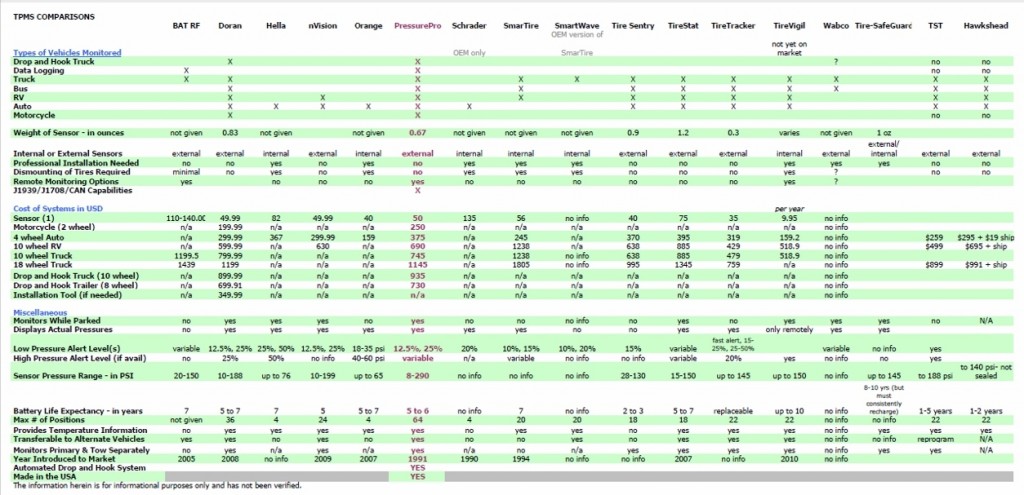
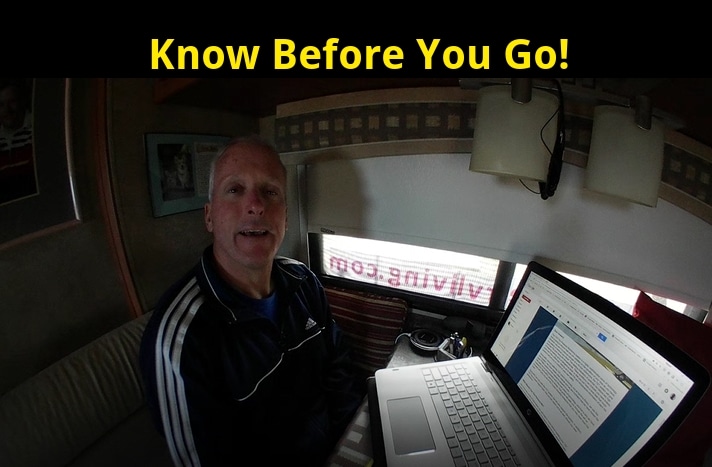
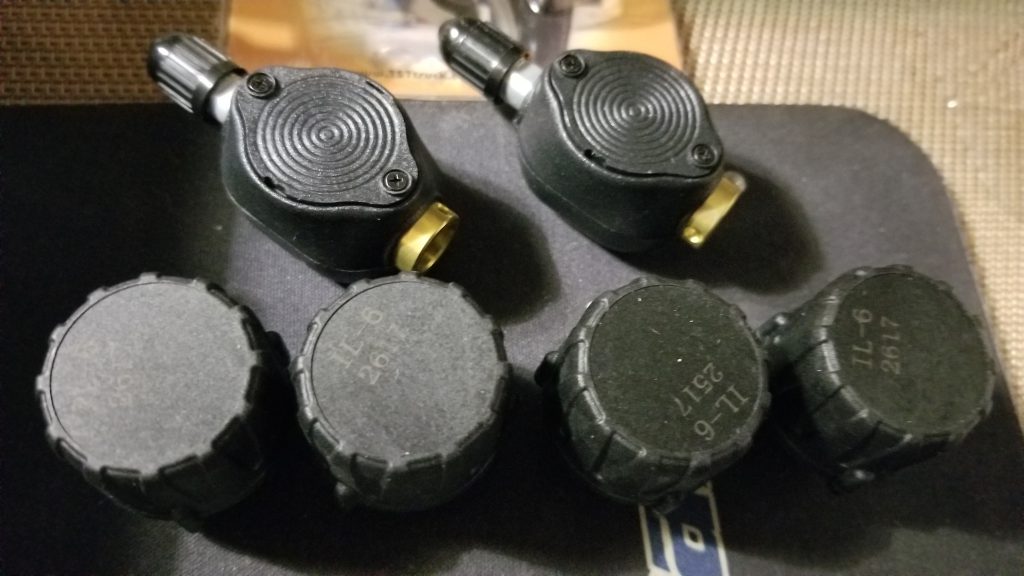
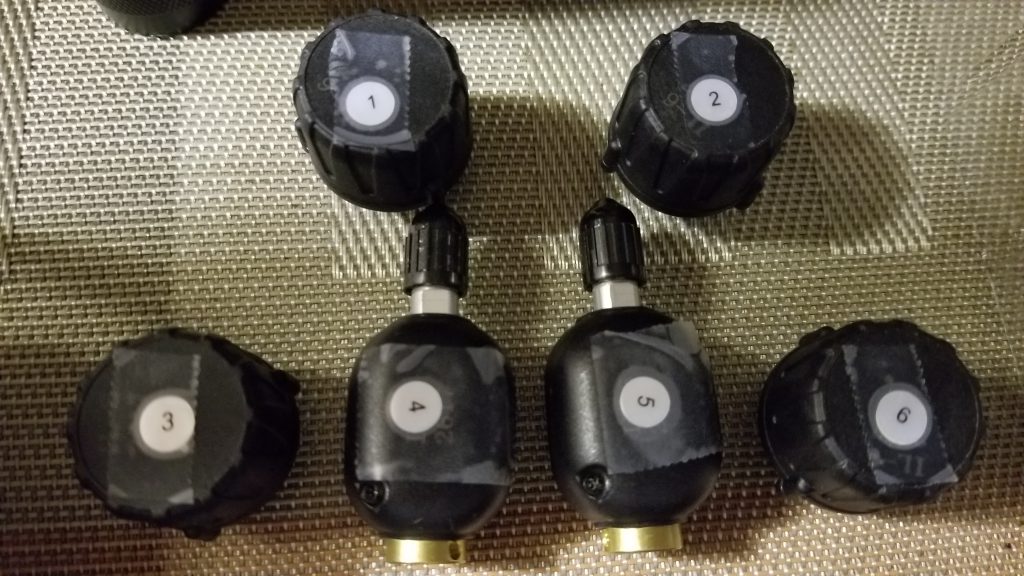
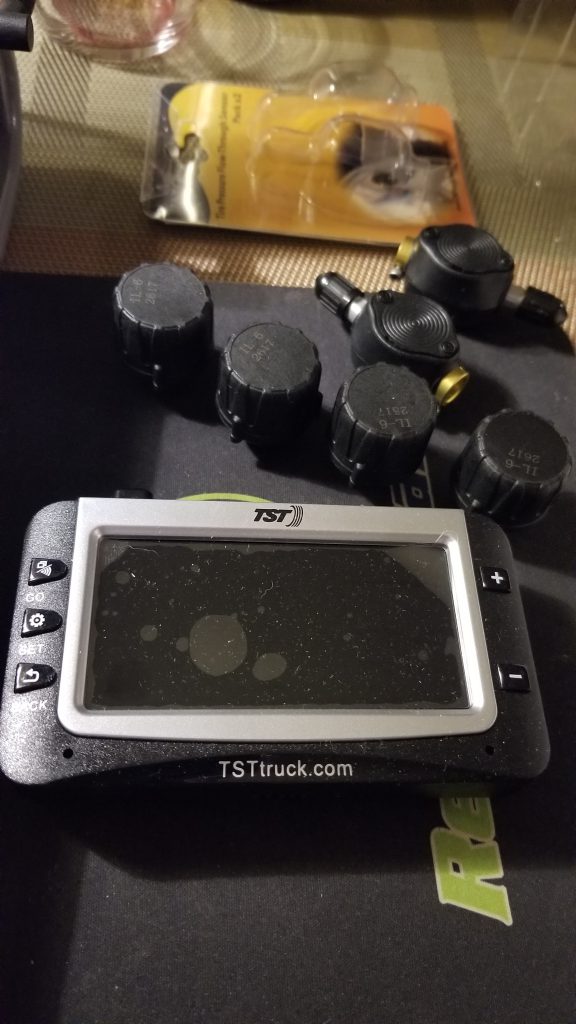
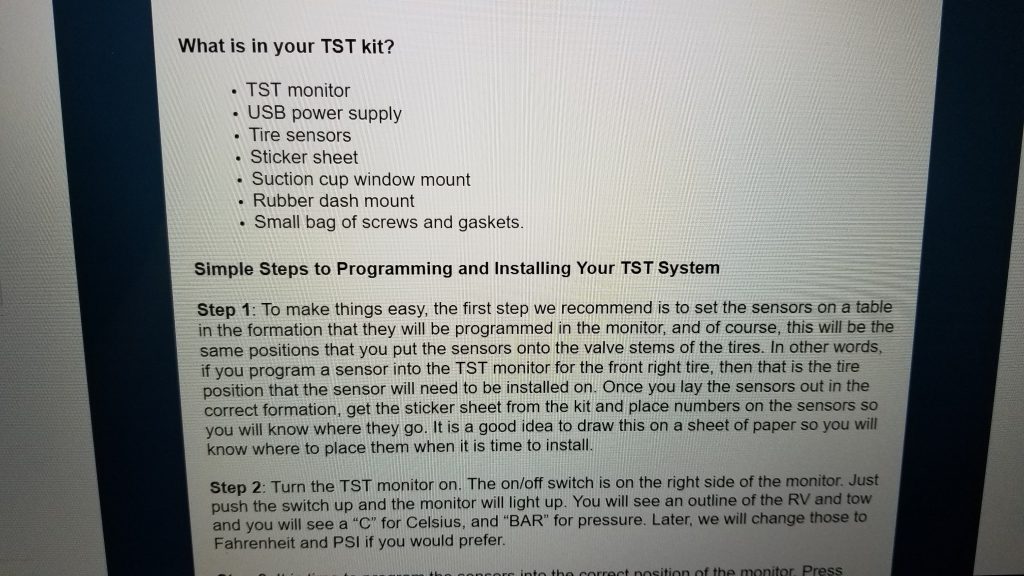
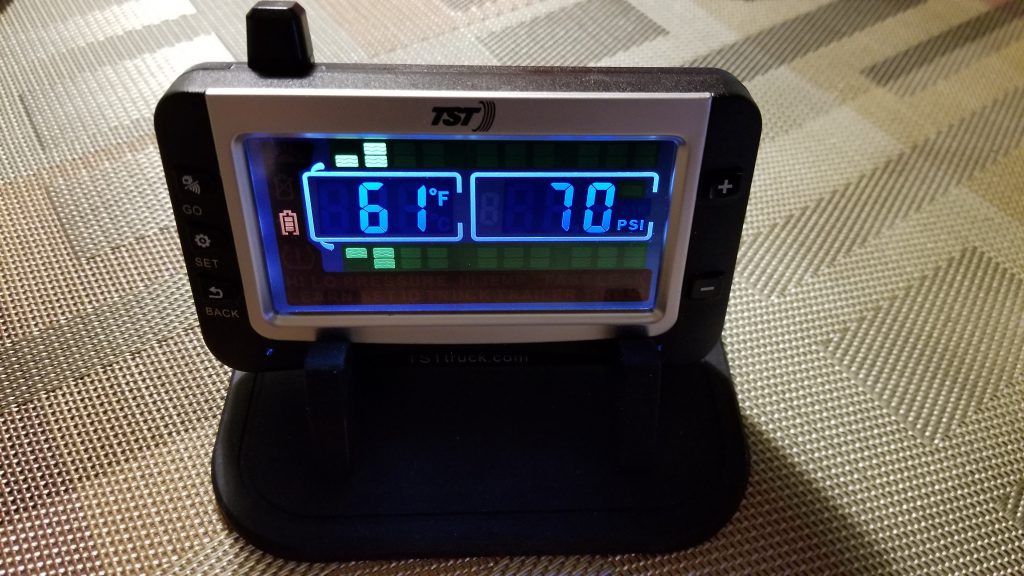
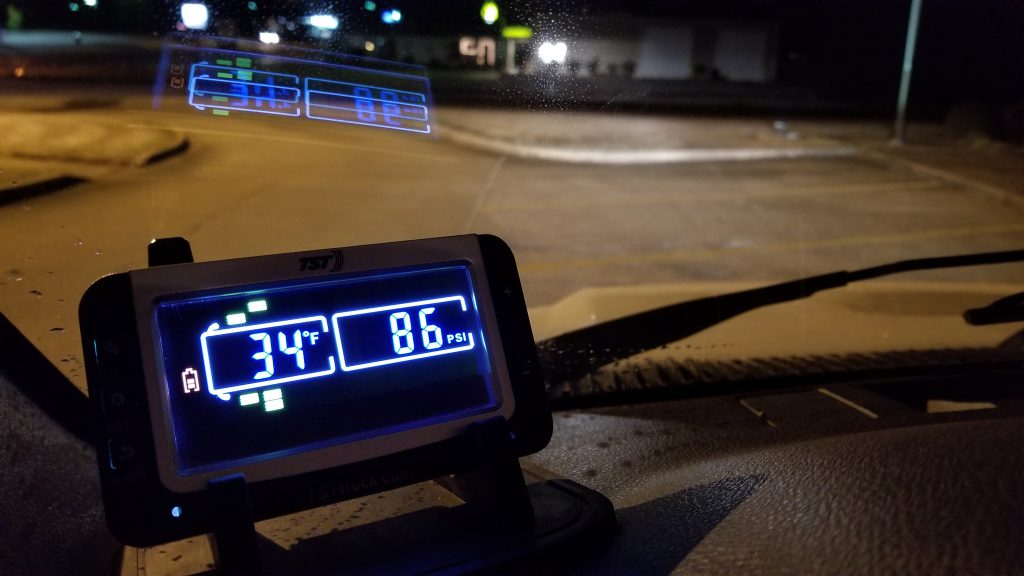
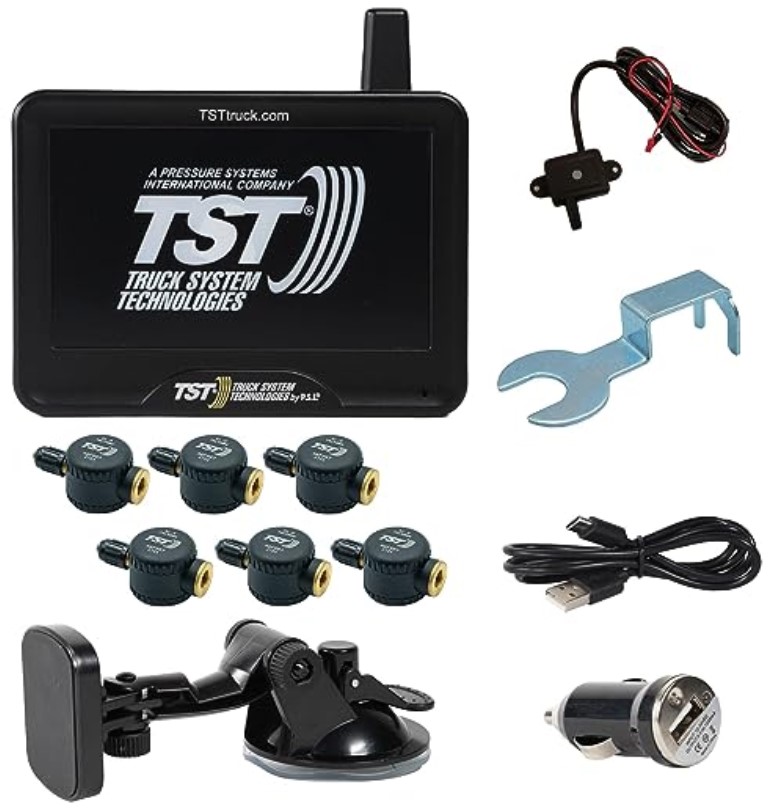


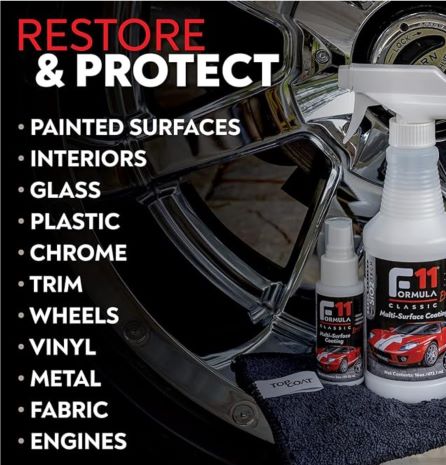




7 comments
Skip to comment form
Howard,
I wanted to say that we at TST appreciate your thorough explanation of the TST tire pressure monitoring system set up and use. Our happy customers make us happy.
Author
Greetings Peggy!
Thanks for taking the time to visit our website and letting us know that our information was useful to the reader! Coming from the manufacturer, that means a lot to us!
If the outside temp affects the tire pressure, and the monitor shows a psi greater than 25% do you just pull off the road and wait for the psi reading to go back down to the regular psi? When must I be concerned about the tire temperature?
Terry
1-678-896-3306
Author
Greetings Terry!
Thanks for stopping by our website!
We use the TST 507 TPMS system. It is recommended that at 25% above the cold pressure to be concerned and stop to check. We have traveled in the heat of summer, and with proper cold pressure set, and the tires not overloaded, we have not exceeded the 25% pressure increase.
But if it did I would definitely stop and let the tires cool while also looking for a possible cause of the increase, perhaps a bearing issue or a braking issue, etc.
We are most cognizant of tire temperatures when it is really warm out. If it is in the nineties, then the road temps will be much higher. We often travel in the early morning hours and get off the road before the hottest temperatures of the day, between 3 – 5 pm. We love the added peace of mind of the instant updates of the TST 507 TPMS!
Howard,
Thank you for the info, I have been looking at tire monitors, you have helped me make my decision. I really like what i read about the TST 507.
Bob
Author
Glad to hear Bob!
We love our new TST color monitor system! The instructions for setup that come with the system for our favorite supplier at https://yourfulltimervliving.com/tiresafety are way better than what comes from the original manufacturer!
Happy Travels!!
Great,Great Page!!!! Thank You!